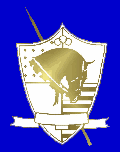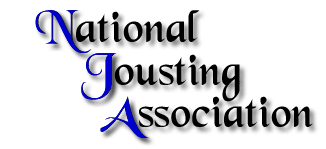"The present custom of wearing riding clothes gives more opportunity for concentration upon the riding rather than upon the bright-colored costume of other days. Indeed, approval of the cotton velvet, tinsel, and barnyard feathers was not unanimous in former days. The Baltimore American, for instance, praises the knights of Mount Royal, Maryland, in 1870 for appearing in English jockey style and dispensing with the "circus paraphernalia seen at some tournaments."
Esther J. Crooks and Ruth W. Crooks
The Ring Tournament in the United States, 1936
In the mid 1800s it was popular to emulate a medieval knight, complete with plumed helmet, horse trappings to the ground and banners flying from the lances. While this is no longer practiced during the competitions, it does have a place in the opening ceremonies as a tribute to the romantic history of the sport. Today's rider adheres to no written dress code. Riding boots, britches, and a polo-style shirt is the most common and comfortable attire. The outfit is usually decorated with the rider's title or maybe a heraldic emblem embroidered on the shirt. The use of heraldry in emblems and colors is a remnant from the medieval period when most knights were illiterate. This practice developed into a very complex, elaborate display for the purpose of identification. Today's competitors can rarely trace their lineage back to the great houses of Europe. So, being the resourceful Americans we are, many of us design our own family coat-of-arms and colors. These may also be used on a sleeveless tunic called a gipon (pronounced gee-pon). Brightly colored sashes are another favorite rider embellishment. Hard hats, or safety helmets are not required at this time, but are highly recommended for obvious reasons. In the more relaxed atmosphere of a small country joust it is not unusual to see jeans and cowboy boots (always fancy, of course).
For the horse, no specialized tack is required. The most popular saddle for jousting seems to be a close-contact English-style saddle with a shallow seat. This type saddle permits greater freedom of movement when the stirrups are shortened, allowing the rider's knees to act as shock absorbers. Many styles of bits and bridles are used. A well-liked style is a double rein bit. The snaffle rein is shortened by tying a knot so that it rests on the horse's neck at the position where a rider rests his hand when on the track. The curb rein remains long. Another option is the use of a leather strap or belt placed loosely around the horses neck at the rider's hand position. Tournament riders may outfit their mount in any manner they wish. It is not unusual, nor unacceptable to see riders in western, Buena Vista, stock or even dressage saddles. Most riders use fancy saddle pads or elaborate browbands, often matching their chosen colors. Some jousting clubs use matching saddle pads, shirts and even jackets.
|
|

